Trip Overview
Our one-day hiking tour is customized for nature lovers who wanted to explore the beautiful countryside of West Sikkim in a day. The hiking tour covers famous locations of tourist interest such as Yuksam, Pelling, Khechupelri Lake, and Tashding.
This one-day short hiking tour includes visits to Monasteries, Lakes, Waterfalls, Tribal villages, and Viewpoints.
This typical one-day hiking tour is of around 8 hours and involves vehicle support to reach each location. The trip starts from either Yuksam or Pelling.
Trip Highlights
1) Yuksam - Visit the oldest Monastery of Sikkim Dubdi Monastery, Holy Kathok Lake, Coronation Throne of Norbugang where the first religious king of Sikkim was crowned, and Tribal Villages
2) Tashiding - Visit the world-famous Tashiding Monastery, Beautiful Phamrong Water Falls, and Tribal Villages
3) Khechupelri Lake - Visit Kanchendzonga Water Falls, Wish-fulfilling Khechupelri lake, Khechupelri Monastery, and Tribal Villages
4) Pelling - Visit famous Pemayangtshe Monastery, Sangacholin Monastery, Chenrezig Statue, Skywalk, and Rabdentshe Palace Ruins
The Tour will cover almost all major and important places of tourist interest.
Health and Fitness
For undertaking a one-day hiking tour in Sikkim, you do not need to have any special physical fitness requirements but you should be able to walk for 1 to 2 hours on easy and moderate trails.
Normal Exercises like Jogging and running at least 2 weeks before the Trip is advisable if you want to enjoy your hike.
People suffering from Acute Heart and Lung diseases, Asthma, and High blood pressure are not recommended to take up long hikes in the Himalayas however, since this is one of the easiest short hikes with a gradual height gain it can be done by anyone with relative fitness and preparation.
The packing of right and comfortable clothing also makes a difference in the completion of the hike, so it is necessary to be disciplined while packing your clothing for the trip. You can contact us for help with clothing choice and packing!
Tour Tips
1. A common tendency among young blood and beginners is to show enthusiasm by walking fast with excitement. Even the experienced sometimes try to show off by walking fast, this is soon exhausting and not recommended. Walk slow - warm up gradually and continue at a slow comfortable pace before pushing yourself a little more.
2. Develop a personal rhythm. Maintain your steps to synchronize with breathing. This will help minimize getting out of breath.
3. Walking in Himalayan trails with loose soil and rocks is tricky. So, avoid stepping on loose soil and rocks and place the foot flat and firm with a better grip. Always follow the rule ‘heel first’ while walking on the Himalaya trail.
4. Walking in a zigzags manner while ascending on a very steep slope is advisable. While descending walking zigzag is a good technique to avoid excessive pressure on knees and avoid knee pain and blisters.
5. Avoid stepping on loose stones and soil to avoid an accident.
6. Avoid overtaking fellow travelers on a narrow trail. Only Overtake at comfortable wide space if necessary.
7. While ascending and descending a slope or over loose stones, leave sufficient space between the next person so that any stone rolling down does not hit trekkers below.
8. Do not run down a slope. Bend knees a little while descending. Dig heels into soft snow or soft ground.
9. Our Himalayan condition is mostly wet so avoid wet grass, wet roots, and the muddy zone which can be very slippery. Be careful while walking on them.
10. Shortcuts on a foot trail should be avoided.
11. Always put on warm clothing while taking a rest. This will help avoid getting cold, cough, and high-altitude sickness
12. Respect the sentiments and traditions of the local hill people.
13. Always carry enough water in your water bottle as water is essential in avoiding altitude sickness.
14. Wear a comfortable and right set of trekking boots, pants, and jackets. Avoid wearing new trekking boots directly for the Trek. Get used to it by wearing it before the trek. Carry all necessary clothing.
Halts and Rests:
1. While taking a rest, lie against a tree trunk, a big stone, or on flat ground. Place your legs on your bags or any other higher ground. This helps regulate blood circulation.
2. Stop at any comfortable point after the first start to readjust your rucksack, jackets, or tie a shoelace for better comfort and adjustment.
3. Do not make frequent or prolonged halts. Too many small stops destroy the walking rhythm. Frequent rests are not helpful. You should follow your own rhythmic walking pace and technique to avoid unnecessary tiredness. A stop should be made only at natural stopping points, like on the top of a ridge, or before an ascent, or at a scenic viewpoint.
4. Stop and place yourself on the safer (Mountain) side to give way for the pack animals to pass through. Avoid bags carried by the animals that can push you. Be aware of the yak's horn too.
FAQ (Frequently Asked Questions)
HOW TO REACH YUKSAM / PELLING?
The closest Airport and Railway station to Yuksam and Pelling, Sikkim is PAKYONG AIRPORT & BAGDOGRA AIRPORT / NJP Railway station. You have to fly either to Bagdogra Airport or Pakyong Airport or board a train to NJP Railways station. From there you can drive to Yuksam or Pelling with a private reserve vehicle.
Pakyong Airport is around 6 hours’ drive and Bagdogra Airport / NJP Railways station is around 7 hours’ drive from Yuksam/Pelling.
WHAT GEARS AND CLOTHING TO CARRY FOR ONE DAY HIKING TOUR?
No matter what season you are planning for the mountains are always going to be cold, rough, and tough so it is necessary to pack yourself with adequate and proper clothing. Here is the standard kit checklist for the Trek.
Proper packing of the trekking gears is necessary with eyes on the weight limit. It is important to have a good brand of clothing.
Basic Gears:
Day Pack & rain cover (20 to 30 ltr)
Walking stick (1 pair or at least one)
Water Bottle (2 bottles of 2 ltr each)
Upper and Lower Clothings:
T-Shirt full sleeves). Mostly noncotton
Fleece T-shirt
Wind and Waterproof jackets & pants
Trekking Pants. Comfortable and durable
Short Trekking Pants
Poncho
Headgears:
Woolen cap (1 nos)
Sun cap (1 nos)
Balaclava or scarf (1 nos)
Sunglasses (1 nos) U/V protected and dark
Feet gears:
Waterproof Trekking boots of any company or
Snickers or running shoes preferably from any reputed brand
Personal utilities:
Sunscreen cream
Moisturizers
Hand sanitizers
Toilet papers and wipes
Proper packing of the trekking gears is necessary with eyes on the weight limit.
CAN I EXIT YUKSAM/PELLING ON THE LAST DAY OF THE TREK DIRECTLY?
No, Driving to Airport and Railway station directly after the trek is not recommended.
We will advise not to plan to leave directly after the Hike as it will be too tiring and hectic. Driving at night on the Himalayan road is not comfortable and enjoyable.
The earliest you will reach Yuksam/Pelling after the hiking tour is around 4 to 5 pm so long hours drive thereafter is not possible.
CAN I LEAVE EXTRA BAGS AT THE OFFICE AND COLLECT THEM AFTER THE HIKE?
Yes, you can keep a bag and collect it after the trek.
You can even keep valuables and cash at our office safely and collect them after the trek.
WHAT DOCUMENTS NEED TO BE CARRIED?
Indian trekkers must carry identification documents such as VOTER ID CARRD, DRIVING LICENSE, AADHAR CARD, INDIAN PASSPORT. Original documents need to be carried along with 4 pcs PASSPORT SIZE photograph.
Foreigners need to carry INDIAN VISA, PASSPORT & SIKKIM INNER LINE PERMIT along with 4 pcs PASSPORT SIZE photographs.
A medical fitness certificate is also mandatory.
IS THERE CONNECTIVITY DURING THE HIKE?
There is good phone connectivity throughout the day.
You get Vodafone, Airtel, and Jio networks.
There is an electricity and charging option throughout the day hike.
HOW IS THE WEATHER & TEMPERATURE DURING THE HIKE?
There are two distinct seasons for doing the Hike like high-altitude treks and low altitude treks. Mid-March, April to May (Spring) and Mid-September, October to November (Autumn). Normally weather remains good and clear in those given periods however there is no guarantee as weather is extremely unpredictable in our Himalayas and does change within hours and days.
The temperature at each campsite depends largely on each day's specific weather condition.
Spring (Mid-March, April till May)
* Yuksam and around
Morning and Evening – 12 to 16 degrees centigrade
Day time – 18 to 24 degrees centigrade
Late Evening and Mid Night – 8 to 14 degrees centigrade
Autumn (Mid-September, October till November)
* Yuksam and around
Morning and Evening – 8 to 14 degrees centigrade
Day time – 16 to 21 degrees centigrade
Late Evening and Mid Night – 2 to 10 degrees centigrade
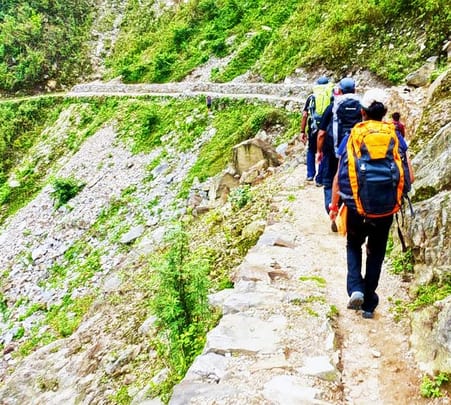

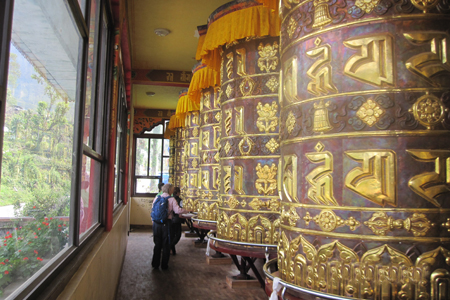


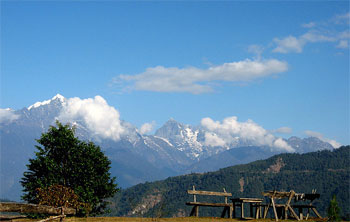


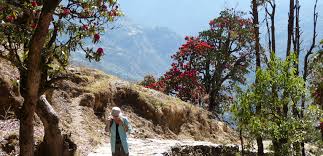


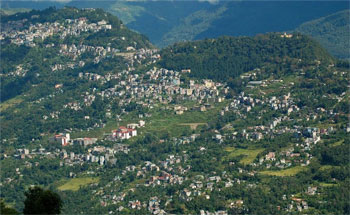







 Dear
Dear
 Dear
Dear Dear
Dear






